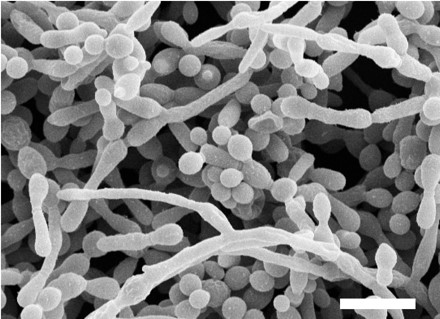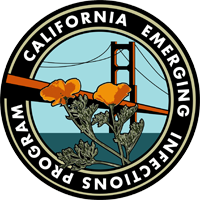
Overview
CEIP conducts surveillance for candidemia (Candida spp. bloodstream infections) through the Healthcare-Associated Infections Community Interface (HAIC). For each case of candidemia in the study population, CEIP generates a case report form with basic demographic information.
Candida spp. are fungal pathogens that can cause severe bloodstream infections (BSI) or candidemia. Additionally, Candida spp. are among the most common causes of healthcare associated BSIs and are associated with high morbidity and mortality, and increases in hospital cost and length of stay.
Objectives
- To describe the incidence of candidemia in the United States utilizing active, population-based, laboratory surveillance.
- To describe the species distribution of Candida spp. causing candidemia in the surveillance catchment area.
- To describe the prevalence of and risk factors for antifungal drug resistance among Candida spp. bloodstream isolates.
- To describe treatment and outcomes of candidemia, including time to initiation of treatment, type of treatment, time to clearance of infection, morbidity and mortality, and associated factors.
- To identify best practices to prevent Candida infections.
Main Components
The main component of candidemia surveillance is active, laboratory-based surveillance in Alameda County hospitals. Surveillance Officers collect patient information from medical records using standardized data collection forms. Initial blood cultures positive for Candida spp. are collected and sent to the Centers for Disease Control and Prevention for further testing.
- Subsequent blood cultures for Candida glabrata will also be collected.
- Data are sent to CDC for analyses.
- Survey Alameda County laboratories to assess changes in laboratory testing practices.
Surveillance
Case Definition
Surveillance is conducted for all blood cultures positive for a Candida spp. among Alameda County residents. An incident case of candidemia is defined as the first isolation of Candida spp. from blood from a resident of Alameda County on or after January 1, 2017.
Case categorization:
Recurrent episodes:
Candidemia cases that have a positive blood culture for Candida spp. > 30 days from the initial positive culture are considered a new case.
Subsequent cultures:
Candidemia cases that have a positive blood culture for Candida spp. < 30 days from the initial positive culture are considered a subsequent case.
Data Overview
Yearly candidemia surveillance trends are available at CDC’s HAIC invasive candidiasis statistics.
Links
- Invasive Candidiasis
- Emerging Infections Program Candidemia
- Emerging Infections Program Publications
Publications
Sharon V Tsay, MD, Yi Mu, PhD, Sabrina Williams, MPH, Erin Epson, MD, Joelle Nadle, MPH, Wendy M Bamberg, MD, Devra M Barter, MSc, Helen L Johnston, MPH, Monica M Farley, MD, Sasha Harb, MPH, Stepy Thomas, MSPH, Lindsay A Bonner, MS, Lee H Harrison, MD, Rosemary Hollick, MS, Kaytlynn Marceaux, BA, Rajal K Mody, MD, MPH, Brittany Pattee, MPH, Sarah Shrum Davis, MPH, Erin C Phipps, DVM, MPH, Brenda L Tesini, MD, Anita B Gellert, RN, Alexia Y Zhang, MPH, William Schaffner, MD, Sherry Hillis, MPH, MA, Danielle Ndi, MPH, Caroline R Graber, MS, RN, Brendan R Jackson, MD, MPH, Tom Chiller, MD, MPHTM, Shelley Magill, MD, PhD, Snigdha Vallabhaneni, MD, MPH, Burden of Candidemia in the United States, 2017, Clinical Infectious Diseases, , ciaa193, https://doi.org/10.1093/cid/ciaa193
Kao, A. S., Pruitt, M. W., Conn, L. A., Perkins, B. A., Stephens, D. S., Baughman, W. S., Reingold, A. L., Rothrock, G. A., Pfaller, M. A., Pinner, R. W., Hajjeh, R. A. (1999). The Epidemiology of Candidemia in Two United States Cities: Results of a Population-Based Active Surveillance. Clinical Infectious Diseases, 29(5), 1164-1170. doi: https://doi.org/10.1086/313450
For more information regarding other studies and publications please go to the link listed above
Contact
For questions about Candida spp. surveillance and projects, please contact:
Joelle Nadle, MPH
Project Coordinator, HAIC
haic@ceip.us
Important information for clinical and county laboratorians
CEIP coordinates isolate pickups from your facility via courier. We are interested in all initial blood cultures from which any Candida species was isolated. For Candida glabrata only, we are interested in all isolates from blood cultures.
For questions about isolate pick up, coordination, media slants, or slant mailers and labels please call the CEIP main line at (510)-451-1344
